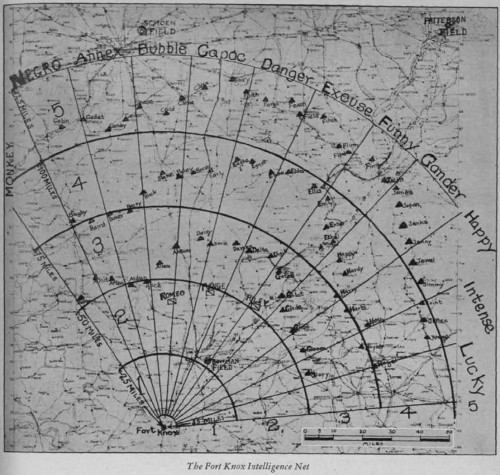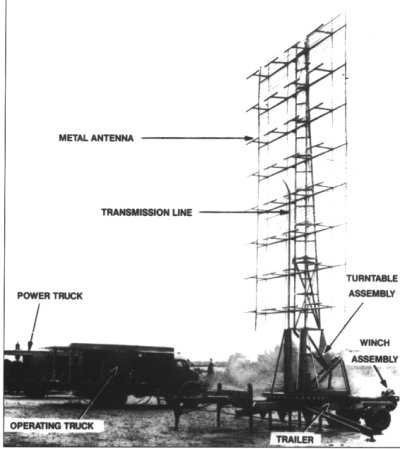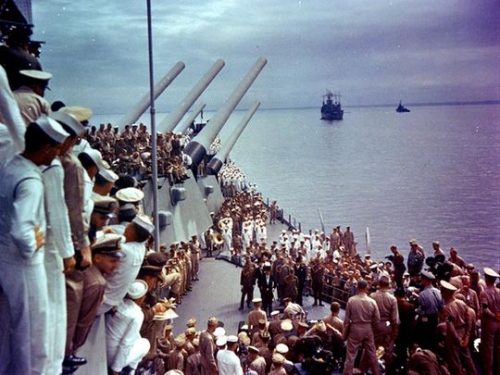Seventy five years ago today, on Feb 19, 1942, Darwin, Northern Territory, Australia had been turned from a backwater port supporting a railway distribution system for cattle and other agricultural products into the forward staging air and sea facility for the Allied Defense of Java against the Imperial Japanese Military juggernaut that was over running the Philippines and South East Asia. And in this role, Darwin became “Australia’s Pearl Harbor” as four carriers of the IJN 1st Air Fleet — the dreaded KidÅ Butai — arrived. They delivered a raid of 188 strike planes comprised of 36 A6M Zero fighters, 71 D3A “Val” dive bombers, and 81 B5N “Kate” torpedo bombers that arrived at around 10:00am. This raid was followed later around noon the same day by 54 high altitude, land based, twin engine bombers (27 Mitsubishi G3M medium bombers and 27 Mitsubishi G4M medium bombers) that gutted the RAAF Darwin airfield.
The strike on the port of Darwin sank 11 vessels — including the US Navy’s only seaplane tender in the South Pacific — saw another 3 vessels grounded and left an additional 25 ships damaged.
RAAF Darwin was the forward staging base for the “BRERETON ROUTE“, a pre-WW2 air ferry route through Australia to the Philippines named after General Lewis Hyde Brereton that avoided Imperial Japanese territorial possessions. The route was being used at this time predominantly to support the movement of P-40 fighters, B-17 and B-24 heavy bombers plus A-24 dive bombers (USN SBD’s in USAAF service) to Java. As such, the field was filled with planes. Of the RAAF aircraft present, six Hudson light patrol bombers were destroyed and another Hudson and a Wirraway (a trainer re-roled as a fighter for the lack of anything else) were badly damaged. Two American P-40s and a B-24 Liberator bomber staged for Brereton Route the were also destroyed.
These strikes doomed the defense of Java logistically and were the beginnings of a series of 53 strikes on Australia lasting two years.
Below are a series of links commemorating the battle —
It has been 75 years since the bombing of Darwin
Bombing of Darwin 75th anniversary: Darwin’s underground shelters | NT NewsSTILL hidden within the hilly terrain and dense bushland are a network of bomb storage shelters that reveal a desperate cat-and-mouse tale of hide and seek from Japanese bombers.
Bombing of Darwin 75th anniversary: attacks inspired Territory resilience | NT NewsTHE resilient Territory spirit was born the day Darwin was bombed Lord Mayor Katrina Fong Lim told the 75th anniversary marking the event.
Bombing of Darwin 75th anniversary: Veteran Peter Hackett recalls Top End experience | NT News
ON Christmas morning, 1941, Peter Hackett slipped into a coma as the Ghan pulled into Oodnadatta.
World War II attacks outside of Darwin need more recognition, historians say – ABC News (Australian Broadcasting Corporation)While Darwin bore the brunt of World War II attacks in northern Australia, historians are calling for more recognition for places outside of Darwin that were bombed by the Japanese.
75 years since the Japanese attack on Darwin – Sunday Morning – ABC Radio Does commemorating events like the attack on Darwin or the fall of Singapore show how little remembering does to change who we are and what we are capable of?
Darwin bombing: 75 year commemorationONE of the last surviving World War II veterans to witness the Darwin bombings says the diggers involved never got the recognition they deserved. Tasmanian Brian Winspear can still picture the sun glinting off the bombs like confetti as hell rained down on the city 75 years ago.
75 years on, Darwin bombing remembered | Photos, video | Illawarra Mercury The first wave attacked the CBD and harbour infrastructure. The second wave came for the RAAF base.
As it happened: Japanese bombers attack Darwin The bombing of Darwin 75 years ago was the single largest attack ever mounted by a foreign power against Australia. WWII had come to the Australian mainland.
Bombing of Darwin commemorations mark 75th anniversary since Japanese attacks – ABC News (Australian Broadcasting Corporation) Survivors and veterans of the bombing of Darwin 75 years ago have been honoured for their role in preserving freedom and rebuilding peace.
‘They’ll be over tonight‘: veteran recalls Darwin terror raids – 9news.com.au Seventy five years to the day after Japanese bombs devastated Darwin, Warren Stickley vividly remembers the night he shone a spotlight on an enemy bomber so fellow soldiers could blast it out of the sky.




